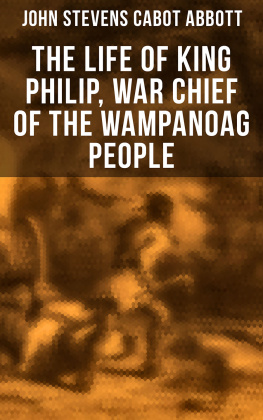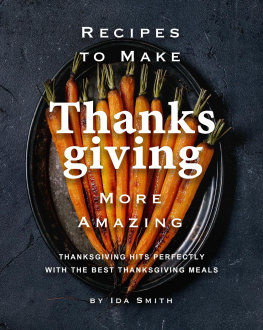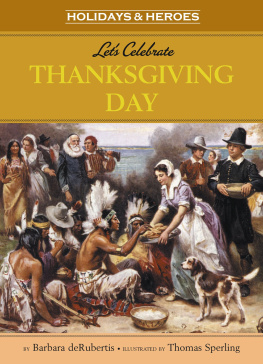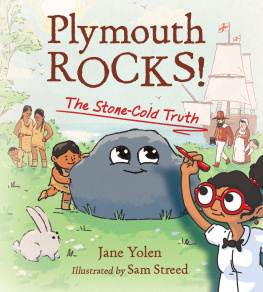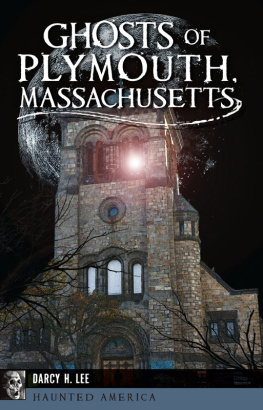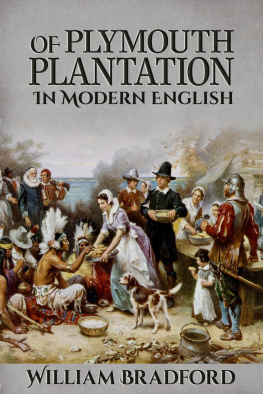Contents
Guide
Pagebreaks of the print version

To Aquinnah and Bela Silverman,
For whom Im thankful
BY THE SAME AUTHOR
Thundersticks: Firearms and the Violent Transformation of Native America
Ninigret, Sachem of the Niantics and Narragansetts: Diplomacy, War, and the Balance of Power in Seventeenth-Century New England and Indian Country
Red Brethren: The Brothertown and Stockbridge Indians and the Problem of Race in Early America
Faith and Boundaries: Colonists, Christianity, and Community among the Wampanoag Indians of Marthas Vineyard, 16001871

CONTENTS
I have modernized the spelling and punctuation of quotations from seventeenth-century sources to make it easier for readers to focus on the meaning of the words instead of on their unfamiliar forms. I have also standardized Indian proper names and place names rather than replicate the various phonetic spellings that appear in colonial documents. Despite these measures, readers will still have to confront a wide array of unfamiliar Indian personal and place-names. After all, this is a history about Indian people and places. Grappling with those names, including trying to sound them out and track them through the story, is part of the challenge of writing and reading Native American history. I have included a glossary of the Indian (and some English) names that appear in this book to help readers stay on course.
Stylistically, writing about indigenous people in a manner that is respectful and accessible poses a number of challenges. One of them has to do with whether to use the singular or plural when referring to a group, for example, the Wampanoag versus the Wampanoags. Some modern Native people prefer the singular both out of convention and because it conveys a message of unity. My usual default in such stylistic matters is to defer to the descendant communities, but in this case I have decided to stick with the plural because it is consistent with how I refer to other groups of people and it captures the often-contested, fluid nature of many tribal entities during the seventeenth century.
Some mostly non-Native readers will find my use of Indian a bit jarring because some educators teach that it is racially insensitive. In this case, Im deferring to the common practice of Native New Englanders and many other indigenous people in the United States, who over the generations have appropriated and come to take pride in the designation Indian. Wherever possible, however, I refer to specific groups.
In cases where English-language terms are ideologically problematic and an equivalent from the Wpanak (or Wampanoag) language or a closely related Algonquian language family is known to me, I have used it after consulting with modern Wampanoag people. For instance, I sometimes use matawaog instead of warriors because warriors can mistakenly connote a lack of discipline and even savagery, when in fact Wampanoag fighters were highly trained and organized.
England and its colonies used the Julian calendar until the year 1752, under which the new year started on March 25. (By this system, Sept ember was indeed the seventh month, Oct ober the eighth, and Dec ember the tenth.) Yet, because other European states had adopted the Gregorian calendar, which we use today, English colonists typically gave two years for dates between January 1 and March 25. I have eliminated the double dating and used the Julian year for dates. For example, a date that Plymouth colonists might have rendered as February 1, 1675/76, will appear here as February 1, 1676. By the colonial era, the Julian calendar also ran eleven days behind the Gregorian. I have not corrected that gap in my rendering of dates.
Serious, critical history tends to be hard on the living. It challenges us to see distortions embedded in the heroic national origin myths we have been taught since childhood. It takes enemies demonized by previous generations and treats them as worthy of understanding in their particular contexts. Ideological absolutescivility and savagery, liberty and tyranny, and especially us and thembegin to blur. People from our own society who are not supposed to matter, and whose historical experiences show how the injustices of the past have shaped the injustices of the present, move from the shadows into the light. Because critical history challenges assumptions and authority, it often leaves us feeling uncomfortable. Yet it also has the capacity to help us become more humble and humane.
There always have been and always will be reactionaries who accuse the tellers of such histories of iconoclasm. Today, such critics might make the charge of revisionism or political correctness. To defenders of the status quo, it does not matter if the origin myth or national history is untrue or hurtful to those it leaves out or vilifies. The point is that the story upholds the traditional social order by teaching that the rulers came by their position heroically, righteously, and even with the blessing of the divine. Such themes are favored by those guarding their privilege against the supposed barbarians at the gates.
Frank
Jamess parents raised him to stand up against a society that denied who he was, misrepresented or ignored his peoples past, and saddled Indian children with low expectations. He remembered them counseling him, You must succeedyour face is a different color in this small Cape Cod community. He did just that. At fourteen years old, he adopted the Wampanoag name of
At the same time, he figured out how to thrive in the white world. He served in the U.S. Coast Guard Auxiliary during World War II, carrying on a long tradition of Wampanoag volunteers fighting in the wars of the United States and its colonial predecessors. Then he pursued his early love for music, especially trumpet, all the way to the prestigious New England Conservatory of Music in Boston, only to discover when he graduated in 1948 that no national orchestra would hire him because of racial segregation. Undaunted, he returned to Wampanoag country to become a music teacher and then director of music in the Nauset regional schools on Cape Cod.
But those were just his day jobs. His passion was political activism to improve the lives of the Wampanoags and other indigenous people. To that end, he served as president of the
By the time of Jamess childhood, the American holiday of Thanksgiving had become associated with an origin myth in which the Wampanoags played an important if supporting role. Yet that was not always the case. During the eighteenth century and the first half of the nineteenth, Thanksgiving had no link whatsoever with Pilgrims and Indians. It was a regional holiday, observed only in the New England states or those in the Midwest to which New Englanders had migrated. Individual states decided whether and when they would hold the holiday, though the traditional time was late November to mark the close of the agricultural year. The so-called
The character of the holiday began to change only around the time of the Civil War. In 1863 President Abraham Lincoln declared that the last Thursday of November should be held as a national day of Thanksgiving, apparently in response to intense lobbying by
The lionization of the Pilgrims also grew out of
Yet it was one thing for the people of Massachusetts to claim the Pilgrims as forefathers and a dinner between Pilgrims and Indians as the template for a national holiday. It was quite another for the rest of the nation to go along. For that to occur, the United States first had to complete its subjugation of the tribes of the Great Plains and far West. Only then could its people stop vilifying Indians as bloodthirsty savages and give them an unthreatening


